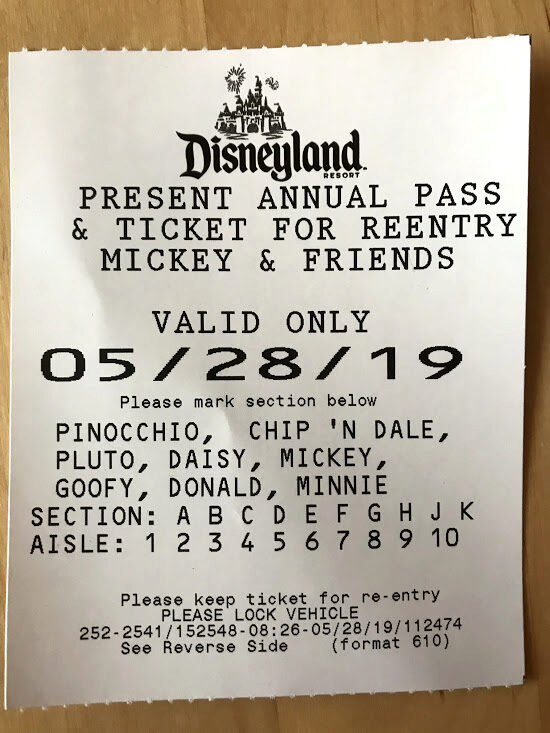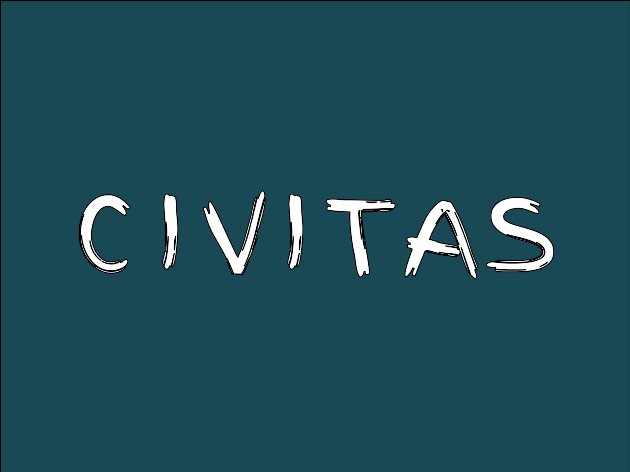The value of Disneyland's mission
Probably the first thing adults notice when they arrive at Disneyland is that it costs at least $25 to park. Obviously, Disney has a virtual monopoly on nearby parking. Knott's Berry Farm, the other theme park in Orange County, starts at $20 for that reason. The place where the NHL Ducks play, which is sadly no longer called the "Pond of Anaheim", charges $20 too. Angel Stadium is a relative bargain at $10. So why can Disney afford to charge so much?
One way to answer that is to describe what you get for your $25:
-
The cashier is polite, effecient and seems happy to be there.
-
You get a ticket that can be used for reentry. Does anyone use this feature? I don't know, but it costs nothing.
-
The ticket is also designed so you can circle your parking spot and find it later:

-
As you pull into the parking structure, an employee directs you to a lane created by traffic cones. You'll follow that line right to your appointed parking spot. There's no stress worrying about whether you'll find a spot. The only concern you might have is whether your spot will be close to the escalator. (You can avoid that by paying extra for preferred parking.)
-
The parking system is designed to funnel cars in behind recently parked cars so that you can safely walk to the escalator without risking being run over.
-
There are
employeescast members everywhere: directing traffic, moving cones and providing security. Everyone seems happy. -
Also: trash cans everywhere, none of them are full and garbage on the ground has a half-life measured in minutes. I'm pretty sure cast members are told to pick up trash even if that's not their primary job.
That's just parking! The rest of your day has been engineered to be even more delightful.
Now parking isn't perfect. We recently visited when an escalator broke down so it was slow to get everyone to the tram area. Since the floors are parked one at a time, one escalator is full while the rest are unused. There aren't enough elevators to handle all the strollers and wheelchairs that come through, so people have to stand in a long line for what I call "the first ride of the day". The top floor is uncovered and gets insanely hot.
A new parking structure, which is currently getting built, will, no doubt, eliminate some of those problems. If there's not somebody doing nothing but thinking about how to make parking at Disney theme parks better, it's because there are several such somebodies. Sometime in the last ten years Disney moved the bag check and metal detectors to the parking structure instead of directly in front of the park. It's such a minor change, but having experienced both locations, the change is obviously an improvement. I hope whoever made that discovery got a good raise.
In essence, Disney can charge an extra $5 because they are constantly working to make the parking experience better. They take their tagline, "The Happiest Place On Earth", rather seriously.
Walking around Disneyland feels like visiting a carefully constructed utopia. Remarkably, everyone seems to be in on the illusion. Employees take on the role of "cast members" in the Disneyland production. With the expection of employees playing Disney characters, every cast member wears the same white oval badge with their first name and hometown. Even management, identifiable by business clothes rather than themed costumes, goes out of their way to make sure guests are having a good time.
It's not obvious why visitors play their part. Part of it could be that when you pay a lot of money to do something, you are really predisposed to believe you are enjoying that thing. This is why legendarily terrible movies like Howard the Duck still get a passing grade from the folks who saw it on opening night. Nostalgia also plays a part. Disney properties are so entwined with popular culture that something is bound to bring back childhood memories.
One of my childhood memories was planning out, with my brothers, a route to get us to each of the "mountains" (Space Mountain, Big Thunder Mountain, Splash Mountain and the Matterhorn) in the park. For us, these thrill rides were the only attractions that really mattered. My dad's nostalgia took him to classic rides like the Jungle Cruise and the Teacups. It wasn't until my daughter got old enough to care that I discovered a whole new world of meeting Disney princesses.
In a sense, Disney has carved out paths for different types of visitors. Other than having to deal with traffic (because of the parade you don't care about, say), people don't really need to think about paths they aren't on. When I see huge families with matching T-shirts proclaiming the purpose of their reunion, I'm slightly baffled about why they are paying so much when they could just meet at a park and have a giant BBQ. But there must be some path for these groups since they seem to be having a wonderful time. (Maybe they are the folks who go on "It's a Small World"?)
Implicitly, these paths exclude certain types of people too. The roller coasters aren't nearly as crazy as the ones at Knott's, so hardcore thrill-seekers either don't come or come for some other reason. Disney has been slow to introduce alcohol to their parks (though it's now available at California Adventure and the new Star Wars expansion), so that's another barrier for some people.
I don't think Disney decided to make tame rides and serve only soft drinks because they wanted to limit their clientele. Instead, they wanted to make Disneyland delightful for families and parents don't like to have deal with children who are disappointed in not being able to ride an exciting ride or taste an exotic drink. Now that they've perfected the family experience, they can start building paths for other visitors.
The original mission of Stack Overflow was pretty clearly stated by Joel in the first podcast episode:
So, what we're trying to get here, we could say, a place where you can ask questions, technical questions since we're programmers, and get answers and then get those answers rated and try to have the signal rise to the top and the noise just disappear forever.
It was a mission to create something that didn't exist, but obviously should exist. And now it does! We've even hit Joel's larger mission:
Our longer term goal, if we’re successful, is that you're trying to figure out how to do something in Python like how to merge two arrays in Python and you go to Google and you type "merge two arrays python" and submit that, and our goal is to be the number one hit that comes up with a really good edited answer to that question that some individual has contributed and maybe other individuals have edited.
I hardly needed to do it, but just in case I was overconfident, I
opened an incognito window and asked Google
merge two arrays python
and the top result is a bunch of pages on Stack Overflow, including
How do I concatenate two lists in Python?
That question was asked in the fall of 2009 and it's got almost 2
million views and the accepted answer was updated this year. I'd argue
that Stack Overflow was able to nail that mission because it's clear
and actionable.
Stack Overflow struggles to be a place where people are delighted, however. Yes, people searching for solutions are often delighted to find answers. But they leave as soon as they can. (If we're lucky, they vote up the answers that helped and the questions that helped them find those answers.) Askers aren't delighted because there are so many (seemingly) pointless rules. Answerers certainly aren't delighted by repetitive and (seemingly) lazy questions. Curators aren't delighted because, well, our moderation tools are pretty poor.
We need to build (and repair) paths for people to have a good experience. This is one of the reasons that the Ask Wizard holds promise. The early results, however, suggest at most an incremental improvement. Questions asked via the wizard get a marginally better reception, but it's still frustrating for just about everyone. Fixing the asking experience likely will take more aggressive measures.
One idea that has come up internally would work something like the Code Golf Sandbox. Indeed, it has the same name: a question sandbox would be an area where an asker could try out their question and potentially get help from others before publishing it to the world. It's kinda similar to a test environment: you don't need to worry about breaking the production system each time you make a change. At this point, Stack Overflow is probably the largest collection of useful questions and working answers ever created. Just about everything added to it amounts to subtraction by addition and so we block tons of potential questions to avoid duplication or unanswerable posts.
With a sandbox, new contributions could be vetted before going out to the community of answerers. Done right, people answering questions would see far fewer uninteresting, unanswerable and duplicate questions. Curators could focus on improving a pool of public content that isn't growing quite so fast. And, of course, askers could be more confident doing the sorts of things that are necessary to learn a new skill. (Everyone I talk to agrees asking is a skill not everyone possesses.) Who knows? They might even rubber duck their way into a solution.
Obviously it won't solve every problem and might make new ones. But like the crowd control systems at Disneyland (I neglected to mention the surprisingly simple and effective Fastpass service), a sandbox-type system could prevent parts of the overall system from getting overwhelmed. In any case, it breaks apart one complication of the current asking system in which question vetting and answering happen simultaneously.
I don't know if we'll pursue this particular path. (I don't make that sort of decision.) But I think focusing on a specific mission and clearing out the barriers users face is the only way we'll improve the Stack Overflow experience.
For feedback, see this GitHub issue.
 If you want to talk with me about community
management schedule
a meeting!
If you want to talk with me about community
management schedule
a meeting!
 Jon Quixote
Jon Quixote